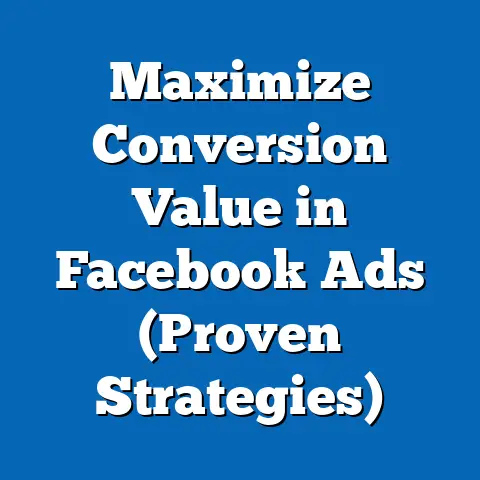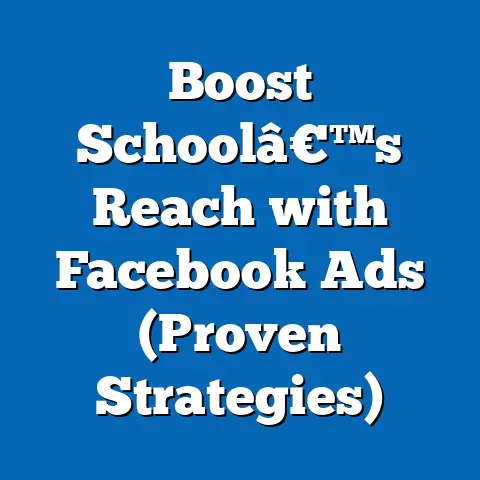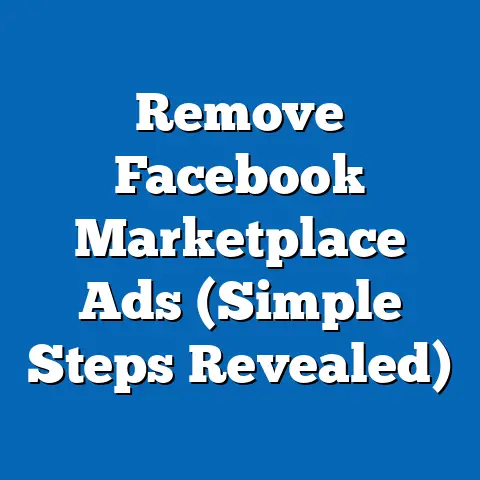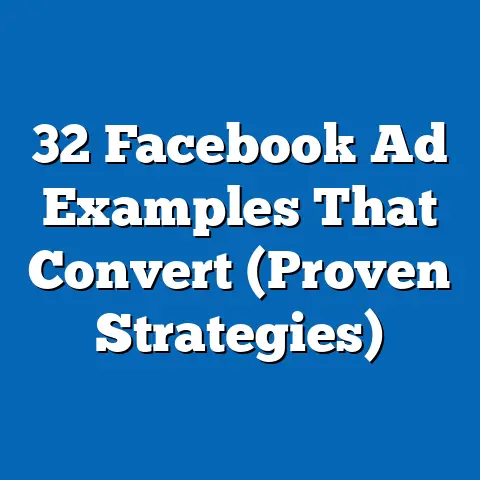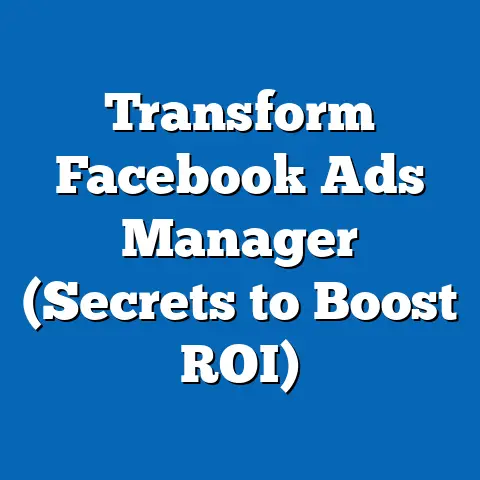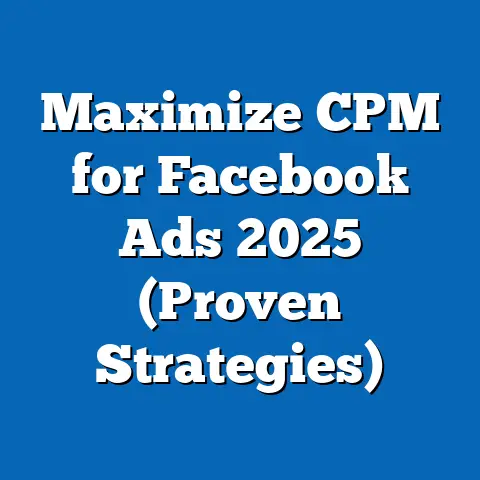Activate Facebook Ad Set (Mastering the Essentials)
Section 1: Understanding Facebook Advertising Basics
In today’s digital age, Facebook advertising has become a cornerstone of effective marketing strategies. I’ve seen firsthand how businesses, both big and small, can leverage this platform to connect with their target audience, drive sales, and build brand awareness. But what exactly is Facebook advertising, and why is it so crucial?
What is Facebook Advertising?
Facebook advertising involves creating and displaying ads on Facebook and its associated platforms, like Instagram, Messenger, and the Audience Network. These ads can take various forms, from simple image ads to engaging video ads, carousels, and even interactive experiences. The beauty of Facebook advertising lies in its ability to reach a highly targeted audience based on demographics, interests, behaviors, and more.
The Importance of Facebook Advertising
Why should you invest in Facebook advertising? Here’s why I believe it’s essential:
- Vast Reach: Facebook boasts billions of active users worldwide, providing unparalleled reach for your message.
- Precise Targeting: As I mentioned before, Facebook’s targeting options are incredibly granular, allowing you to pinpoint your ideal customer with remarkable accuracy.
- Measurable Results: Unlike traditional advertising, Facebook provides detailed analytics, enabling you to track your campaign’s performance and make data-driven decisions.
- Cost-Effective: Depending on your strategy, Facebook advertising can be surprisingly cost-effective, especially when compared to other forms of advertising.
- Versatile Ad Formats: With a range of ad formats, you can choose the one that best suits your message and target audience.
Types of Facebook Ads
Let’s explore some of the most common types of Facebook ads:
- Image Ads: These are simple yet effective ads featuring a single image and accompanying text. They’re great for showcasing products or services visually.
- Video Ads: Video ads are highly engaging and can capture attention more effectively than static images. They’re ideal for telling stories, demonstrating products, or sharing testimonials.
- Carousel Ads: Carousel ads allow you to display multiple images or videos in a single ad, each with its own headline, description, and link. They’re perfect for showcasing a range of products or highlighting different features of a single product.
- Slideshow Ads: Slideshow ads combine multiple images or videos into a visually appealing slideshow format. They’re a great alternative to video ads when you have limited video resources.
- Collection Ads: Collection ads are designed for e-commerce businesses and allow users to browse and purchase products directly from the ad.
- Lead Ads: Lead ads are designed to collect leads directly from Facebook users without them having to leave the platform. They’re ideal for generating sign-ups, inquiries, or contact information.
Navigating Facebook Ads Manager
The Facebook Ads Manager is your command center for creating, managing, and analyzing your ad campaigns. Here are some key features you’ll want to familiarize yourself with:
- Campaigns: This is where you set your overall advertising objective, such as driving traffic, generating leads, or increasing sales.
- Ad Sets: Ad sets define your target audience, budget, schedule, and ad placements.
- Ads: These are the actual creative assets (images, videos, text) that your audience will see.
- Reporting: The reporting dashboard provides detailed insights into your campaign’s performance, including metrics like reach, impressions, clicks, and conversions.
- Audience Insights: This tool allows you to research your target audience and gain a deeper understanding of their demographics, interests, and behaviors.
Key Takeaway: Facebook advertising is a powerful tool for reaching a vast and targeted audience. Understanding the different ad formats and familiarizing yourself with the Facebook Ads Manager are essential first steps in mastering ad sets.
Section 2: The Anatomy of an Ad Set
Now that we’ve covered the basics of Facebook advertising, let’s delve into the core of our discussion: the ad set. I like to think of an ad set as the engine that drives your Facebook ad campaigns. It’s where you define who you want to reach, how much you’re willing to spend, when you want to run your ads, and where you want them to appear.
Components of an Ad Set
An ad set is composed of several key elements, each playing a crucial role in determining the success of your campaign:
- Audience Targeting: This is where you define the characteristics of your ideal customer, including demographics (age, gender, location), interests, behaviors, and connections.
- Budget: This determines how much you’re willing to spend on your ad campaign. You can set a daily budget (the average amount you’ll spend each day) or a lifetime budget (the total amount you’ll spend over the entire duration of the campaign).
- Schedule: This allows you to specify when you want your ads to run. You can choose to run your ads continuously or set a start and end date.
- Placements: Placements determine where your ads will appear, such as Facebook feeds, Instagram feeds, stories, in-stream videos, and the Audience Network.
- Optimization & Delivery: This section lets you choose the specific outcome you want to optimize for, such as link clicks, landing page views, impressions, or conversions.
The Significance of Each Component
Each of these components plays a vital role in the overall success of your Facebook ad campaign:
- Audience Targeting: Accurate targeting ensures that your ads are seen by people who are most likely to be interested in your products or services.
- Budget: Setting the right budget ensures that you’re spending enough to reach your target audience without overspending or exhausting your budget too quickly.
- Schedule: Proper scheduling ensures that your ads are running when your target audience is most active and receptive to your message.
- Placements: Choosing the right placements ensures that your ads are appearing in locations where your target audience is most likely to see them.
- Optimization & Delivery: Optimizing for the right outcome ensures that Facebook is delivering your ads to people who are most likely to take the desired action, such as clicking a link or making a purchase.
Examples of Component Combinations
To illustrate how different combinations of these components can lead to varying results, let’s consider a few examples:
- Example 1: A local restaurant wants to promote a lunch special. They target people within a 5-mile radius of the restaurant who are interested in food and dining. They set a daily budget of $20 and schedule the ads to run between 11 AM and 2 PM. They choose placements on Facebook feeds and Instagram feeds. This targeted approach is likely to generate a high number of local customers during lunchtime.
- Example 2: An e-commerce store wants to promote a new line of clothing. They target women aged 25-45 who are interested in fashion and online shopping. They set a lifetime budget of $500 and schedule the ads to run for two weeks. They choose placements on Facebook feeds, Instagram feeds, and Instagram stories. This broader approach is likely to generate a wider reach and increase brand awareness.
- Example 3: A software company wants to generate leads for a free trial. They target business owners and marketers who are interested in digital marketing and advertising. They set a daily budget of $50 and schedule the ads to run continuously. They choose placements on Facebook feeds, Instagram feeds, and the Audience Network. They optimize for lead generation using a lead ad. This targeted and optimized approach is likely to generate a high number of qualified leads.
Key Takeaway: Understanding the components of an ad set and how they interact with each other is crucial for creating effective Facebook ad campaigns. Experiment with different combinations to find what works best for your specific goals and target audience.
Section 3: Targeting Your Ideal Audience
I can’t stress enough how important audience targeting is in Facebook advertising. It’s the foundation upon which your entire campaign is built. If you target the wrong audience, your ads will fall on deaf ears, and your budget will be wasted. On the other hand, if you target the right audience, your ads will resonate, and your campaign will thrive.
Audience Targeting Options
Facebook offers a wide range of targeting options, allowing you to reach your ideal customer with remarkable precision:
- Demographics: Target users based on age, gender, location, education, relationship status, and more.
- Interests: Target users based on their interests, hobbies, and passions. Facebook gathers this information from the pages people like, the groups they join, and the topics they engage with.
- Behaviors: Target users based on their online behaviors, such as purchase history, device usage, and travel habits.
- Custom Audiences: Create custom audiences based on your own data, such as email lists, website visitors, or app users. This allows you to re-engage with people who have already interacted with your business.
- Lookalike Audiences: Create lookalike audiences based on your existing custom audiences. This allows you to reach new people who share similar characteristics with your best customers.
- Detailed Targeting: This allows you to combine multiple targeting options to create a highly specific audience. For example, you could target women aged 25-35 who are interested in fashion and have recently purchased clothing online.
Creating Buyer Personas
To refine your targeting strategies, I highly recommend creating buyer personas. A buyer persona is a semi-fictional representation of your ideal customer, based on research and data about your existing customers. Creating buyer personas helps you understand your target audience’s needs, motivations, and behaviors, allowing you to craft more effective ads and target them more precisely.
Here are some key elements to include in your buyer personas:
- Demographics: Age, gender, location, income, education, occupation
- Psychographics: Interests, values, lifestyle, personality
- Goals and Challenges: What are their goals? What challenges do they face?
- Pain Points: What are their biggest frustrations?
- Buying Behaviors: How do they research and make purchase decisions?
- Preferred Channels: Where do they spend their time online?
Audience Research and Data Analysis
To gain a deeper understanding of your potential customers, it’s essential to conduct audience research and analyze data. Here are some tips:
- Use Facebook Audience Insights: This tool provides valuable insights into the demographics, interests, and behaviors of your target audience.
- Analyze Your Website Analytics: Your website analytics can provide valuable data about your website visitors, including their demographics, interests, and behaviors.
- Survey Your Existing Customers: Surveying your existing customers can provide valuable insights into their needs, motivations, and pain points.
- Monitor Social Media Conversations: Monitoring social media conversations can help you understand what people are saying about your industry, your competitors, and your brand.
Key Takeaway: Targeting your ideal audience is paramount to the success of your Facebook ad campaigns. By leveraging Facebook’s targeting options, creating buyer personas, and conducting audience research, you can ensure that your ads are seen by the people who are most likely to be interested in your products or services.
Section 4: Crafting Compelling Ad Content
Even with the most precise targeting, your ads will fall flat if your content doesn’t resonate with your audience. I’ve learned that crafting compelling ad content is an art and a science, requiring a deep understanding of your target audience, their needs, and their motivations.
Key Elements of High-Converting Ad Copy
Here are some key elements to consider when crafting high-converting ad copy:
- Headline: Your headline is the first thing people will see, so it needs to grab their attention and make them want to learn more. Use strong verbs, intriguing questions, or compelling statistics.
- Description: Your description should provide more detail about your product or service and highlight its benefits. Focus on solving your target audience’s problems and addressing their needs.
- Call to Action (CTA): Your CTA tells people what you want them to do, such as “Learn More,” “Shop Now,” or “Sign Up.” Use clear and concise language that encourages action.
- Keep it Concise: In today’s fast-paced digital world, people have short attention spans. Keep your ad copy concise and to the point. Get straight to the benefits.
- Use Strong Verbs: Strong verbs can make your ad copy more engaging and persuasive. Examples include “Discover,” “Transform,” and “Achieve.”
- Highlight Benefits, Not Just Features: Focus on the benefits that your product or service provides, rather than just listing its features. Explain how it will improve your target audience’s life.
- Use Numbers and Statistics: Numbers and statistics can add credibility to your ad copy. For example, “90% of our customers report increased satisfaction.”
- Create a Sense of Urgency: Creating a sense of urgency can encourage people to take action immediately. Use phrases like “Limited Time Offer” or “While Supplies Last.”
- Speak to Your Target Audience: Use language and tone that resonates with your target audience. Avoid jargon or technical terms that they may not understand.
The Role of Visuals in Facebook Ads
Visuals play a crucial role in capturing attention and conveying your message. Here are some best practices for image and video creation:
- Use High-Quality Images and Videos: Blurry or low-resolution visuals can make your ads look unprofessional and unappealing.
- Choose Relevant Visuals: Your visuals should be relevant to your product or service and your target audience.
- Showcase Your Product or Service: If you’re selling a product, showcase it in a visually appealing way. If you’re offering a service, show people using it and enjoying its benefits.
- Use Bright Colors and Contrasting Text: Bright colors and contrasting text can help your ads stand out from the crowd.
- Keep it Simple: Avoid cluttering your visuals with too much text or too many elements. Keep it simple and easy to understand.
- Optimize for Mobile: Most Facebook users access the platform on their mobile devices, so make sure your visuals are optimized for mobile viewing.
Emotional Triggers in Ad Content
Using emotional triggers in your ad content can significantly enhance engagement and drive action. Here are some common emotional triggers:
- Fear: Highlight the potential consequences of not using your product or service.
- Greed: Offer exclusive deals or discounts to entice people to take action.
- Curiosity: Tease people with intriguing questions or statements to make them want to learn more.
- Hope: Highlight the positive outcomes of using your product or service.
- Love: Appeal to people’s emotions by showcasing heartwarming stories or images.
- Belonging: Create a sense of community by highlighting the shared values of your brand and your customers.
Key Takeaway: Crafting compelling ad content is essential for capturing attention, conveying your message, and driving action. By focusing on strong headlines, clear descriptions, compelling visuals, and emotional triggers, you can create ads that resonate with your target audience and generate results.
Section 5: Budgeting and Bidding Strategies
Now, let’s talk about the financial aspect of Facebook advertising: budgeting and bidding. I’ve seen many marketers struggle with this, either overspending without seeing results or underspending and missing out on potential opportunities. It’s all about finding the right balance and using the right strategies to maximize your ROI.
Setting a Budget for Facebook Ad Campaigns
Setting a budget for Facebook ad campaigns requires careful consideration of your goals, your target audience, and your available resources. Here are some factors to consider:
- Your Goals: What are you trying to achieve with your ad campaign? Are you trying to drive traffic, generate leads, or increase sales? Your goals will influence how much you need to spend.
- Your Target Audience: How large is your target audience? The larger your target audience, the more you’ll need to spend to reach them.
- Your Competition: What are your competitors spending on Facebook ads? If your competitors are spending a lot, you may need to spend more to compete.
- Your Budget: How much money do you have available to spend on Facebook ads? Be realistic about your budget and don’t overextend yourself.
Daily vs. Lifetime Budgets
Facebook offers two main budget options: daily budgets and lifetime budgets.
- Daily Budget: A daily budget is the average amount you’ll spend each day on your ad campaign. Facebook will try to spend this amount each day, but it may spend slightly more or less depending on the performance of your ads.
- Lifetime Budget: A lifetime budget is the total amount you’ll spend over the entire duration of your ad campaign. Facebook will try to spend this amount evenly over the duration of the campaign, but it may spend more or less on certain days depending on the performance of your ads.
Bidding Strategies
Facebook offers various bidding strategies, each designed to help you achieve different goals. Here are some of the most common bidding strategies:
- Lowest Cost: This strategy aims to get you the most results for your budget. Facebook will automatically bid on your behalf to get you the lowest possible cost per result.
- Cost Cap: This strategy allows you to set a target cost per result. Facebook will try to get you results at or below your target cost.
- Target Cost: This strategy is similar to cost cap, but it gives Facebook more flexibility to bid higher or lower depending on the performance of your ads.
- Bid Cap: This strategy allows you to set a maximum bid for each auction. Facebook will never bid higher than your bid cap.
- Value Optimization: This strategy is designed for e-commerce businesses and aims to get you the highest return on ad spend (ROAS). Facebook will automatically bid on your behalf to get you the most valuable customers.
Monitoring Ad Spend and Adjusting Budgets
It’s crucial to monitor your ad spend regularly and adjust your budgets based on performance metrics. Here are some tips:
- Track Your Key Performance Indicators (KPIs): Track metrics like reach, impressions, clicks, conversions, and cost per result.
- Identify Underperforming Ads: Identify ads that are not performing well and either optimize them or pause them.
- Increase Budgets for Successful Ads: If you have ads that are performing well, consider increasing their budgets to reach more people.
- Use Automated Rules: Facebook offers automated rules that can automatically adjust your budgets based on certain conditions. For example, you can set a rule to automatically increase your budget if your cost per result falls below a certain threshold.
Key Takeaway: Budgeting and bidding are crucial aspects of Facebook advertising. By setting the right budget and using the right bidding strategies, you can maximize your ROI and achieve your advertising goals.
Section 6: Scheduling and Placement of Ads
The timing and location of your ads can significantly impact their performance. I’ve seen campaigns that were brilliantly targeted and creatively executed but still underperformed simply because they were running at the wrong times or in the wrong places.
The Importance of Ad Scheduling
Ad scheduling allows you to choose the right times to run your ads for maximum impact. Consider the following factors when scheduling your ads:
- Your Target Audience’s Behavior: When is your target audience most active on Facebook? When are they most likely to be receptive to your message?
- Your Business Hours: If you’re promoting a local business, consider running your ads during your business hours.
- Special Events or Holidays: Consider running your ads during special events or holidays that are relevant to your target audience.
- Dayparting: Dayparting involves running your ads during specific times of the day. For example, you could run your ads during lunchtime or in the evening when people are more likely to be browsing Facebook.
Ad Placements on Facebook and Instagram
Facebook offers a variety of ad placements, including:
- Facebook Feeds: These are the main news feeds on Facebook where users see updates from friends, family, and businesses.
- Instagram Feeds: These are the main news feeds on Instagram where users see updates from people they follow.
- Facebook Stories: These are short-form videos or images that disappear after 24 hours.
- Instagram Stories: These are similar to Facebook Stories but on Instagram.
- Facebook In-Stream Videos: These are video ads that appear in the middle of other videos on Facebook.
- Instagram Explore: This is a section on Instagram where users can discover new content and accounts.
- Audience Network: This is a network of websites and apps that allow Facebook to display ads outside of Facebook and Instagram.
- Messenger Inbox: This is where your ads can appear in the Messenger app.
Selecting Placements Based on Campaign Goals
Choosing the right placements is crucial for achieving your campaign goals. Here are some tips:
- Consider Your Target Audience: Where does your target audience spend their time online? Are they more active on Facebook or Instagram? Do they watch a lot of videos?
- Consider Your Ad Format: Some ad formats work better on certain placements than others. For example, video ads tend to perform well on Facebook in-stream videos, while image ads tend to perform well on Facebook feeds.
- Test Different Placements: Experiment with different placements to see which ones perform best for your campaign.
Key Takeaway: Scheduling and placement are crucial for maximizing the impact of your Facebook ads. By choosing the right times to run your ads and selecting the right placements, you can ensure that your ads are seen by the right people at the right time.
Section 7: Analyzing and Optimizing Ad Performance
Activating an ad set is just the beginning. The real magic happens when you start analyzing its performance and making data-driven optimizations. I’ve seen campaigns transformed from mediocre to exceptional simply by diligently tracking key metrics and making small, incremental improvements.
Key Performance Indicators (KPIs)
Here are some key performance indicators (KPIs) that marketers should track to measure ad success:
- Reach: The number of unique people who saw your ads.
- Impressions: The number of times your ads were displayed.
- Clicks: The number of times people clicked on your ads.
- Click-Through Rate (CTR): The percentage of people who saw your ads and clicked on them.
- Conversions: The number of people who took a desired action after seeing your ads, such as making a purchase or signing up for a newsletter.
- Cost Per Click (CPC): The average cost of each click on your ads.
- Cost Per Conversion (CPC): The average cost of each conversion.
- Return on Ad Spend (ROAS): The amount of revenue generated for every dollar spent on ads.
- Frequency: The average number of times each person saw your ads.
Tools and Resources for Analyzing Ad Performance
Facebook Ads Manager provides a wealth of data and tools for analyzing your ad performance. Here are some key features:
- Reporting Dashboard: The reporting dashboard provides detailed insights into your campaign’s performance, including metrics like reach, impressions, clicks, and conversions.
- Attribution Window: The attribution window allows you to specify how long after someone sees or clicks on your ad that a conversion should be attributed to that ad.
- Breakdowns: Breakdowns allow you to segment your data by various dimensions, such as age, gender, location, and placement.
- Custom Columns: Custom columns allow you to create your own metrics and track them in the reporting dashboard.
- A/B Testing: A/B testing allows you to test different versions of your ads to see which ones perform best.
Strategies for A/B Testing, Optimizing Underperforming Ads, and Scaling Successful Campaigns
Here are some actionable strategies for optimizing your Facebook ad campaigns:
- A/B Test Your Ads: Test different headlines, descriptions, visuals, and CTAs to see which ones perform best.
- Optimize Underperforming Ads: If you have ads that are not performing well, try optimizing them by changing the headline, description, visual, or CTA.
- Pause or Delete Underperforming Ads: If you’ve tried optimizing an ad and it’s still not performing well, consider pausing or deleting it.
- Scale Successful Campaigns: If you have campaigns that are performing well, consider scaling them by increasing your budget or expanding your target audience.
- Use Automated Rules: Facebook offers automated rules that can automatically pause underperforming ads, increase budgets for successful ads, and more.
Key Takeaway: Analyzing and optimizing your ad performance is crucial for maximizing your ROI. By tracking key metrics, using Facebook Ads Manager’s tools, and implementing actionable strategies, you can transform your campaigns from mediocre to exceptional.
Section 8: Common Mistakes to Avoid
Even the most experienced marketers can fall victim to common pitfalls when activating Facebook ad sets. I’ve made my fair share of mistakes over the years, and I’ve learned valuable lessons from each one. Here are some frequent errors to avoid:
- Poor Targeting: Targeting too broad or too narrow can waste your budget and limit your reach.
- Weak Ad Copy: Unclear, unengaging, or irrelevant ad copy can fail to capture attention and drive action.
- Low-Quality Visuals: Blurry, unprofessional, or irrelevant visuals can make your ads look unappealing and untrustworthy.
- Ignoring Mobile: Failing to optimize your ads for mobile devices can result in a poor user experience and lower conversion rates.
- Not Tracking Conversions: Failing to track conversions can make it difficult to measure your ROI and optimize your campaigns.
- Ignoring Data: Ignoring the data provided by Facebook Ads Manager can lead to missed opportunities for improvement.
- Setting It and Forgetting It: Facebook ad campaigns require ongoing monitoring and optimization. Setting it and forgetting it can result in wasted budget and poor performance.
- Not Staying Up-to-Date: Facebook’s advertising landscape is constantly evolving. Not staying up-to-date with the latest features, best practices, and algorithm changes can put you at a disadvantage.
The Importance of Continuous Learning
The world of Facebook advertising is constantly evolving. New features are introduced, algorithms change, and best practices shift. It’s essential to embrace continuous learning and adapt to the ever-changing landscape. Here are some tips:
- Follow Industry Blogs and Experts: Stay up-to-date with the latest news, trends, and best practices by following industry blogs and experts.
- Take Online Courses: Invest in online courses to deepen your knowledge and skills in Facebook advertising.
- Attend Industry Events: Attend industry events to network with other marketers and learn from experts.
- Experiment and Test: Don’t be afraid to experiment with new strategies and test different approaches.
- Analyze Your Results: Continuously analyze your results and learn from your successes and failures.
Cautionary Tales and Case Studies
To illustrate the consequences of neglecting best practices, let’s consider a cautionary tale:
A small business owner launched a Facebook ad campaign without properly researching their target audience. They used broad targeting and created generic ad copy that didn’t resonate with anyone. As a result, they wasted their entire budget without generating any leads or sales.
Key Takeaway: Avoiding common mistakes, embracing continuous learning, and staying up-to-date with the latest trends are crucial for long-term success in Facebook advertising.
Section 9: Real-World Case Studies
Let’s dive into some real-world case studies of successful Facebook ad campaigns. Analyzing these examples can provide valuable insights and inspiration for your own advertising efforts.
Case Study 1: E-Commerce Brand – Apparel
Objective: Increase online sales of a new clothing line.
Strategy:
- Target Audience: Women aged 25-45, interested in fashion, online shopping, and specific clothing styles.
- Ad Format: Carousel ads showcasing different items from the new clothing line, each with its own headline, description, and link to the product page.
- Budget: Lifetime budget of $1,000.
- Placements: Facebook feeds, Instagram feeds, and Instagram stories.
- A/B Testing: Tested different headlines and visuals to see which ones performed best.
Results:
- Increased online sales by 30%.
- Generated a ROAS of 4:1.
- Increased website traffic by 50%.
What Worked Well:
- Precise targeting ensured that the ads were seen by people who were most likely to be interested in the new clothing line.
- Carousel ads allowed the brand to showcase multiple items in a single ad, increasing the chances of a sale.
- A/B testing helped the brand optimize their ads for maximum performance.
Case Study 2: Local Restaurant
Objective: Increase foot traffic and promote a lunch special.
Strategy:
- Target Audience: People within a 5-mile radius of the restaurant, interested in food, dining, and local businesses.
- Ad Format: Image ads showcasing the lunch special, with a clear headline, description, and call to action (“Learn More”).
- Budget: Daily budget of $20.
- Placements: Facebook feeds and Instagram feeds.
- Ad Scheduling: Ads ran between 11 AM and 2 PM.
Results:
- Increased foot traffic by 20%.
- Increased lunch sales by 25%.
- Generated a positive ROI.
What Worked Well:
- Local targeting ensured that the ads were seen by people who were likely to visit the restaurant.
- Ad scheduling ensured that the ads were running during lunchtime when people were most likely to be looking for a place to eat.
- Clear and concise ad copy made it easy for people to understand the lunch special and take action.
Case Study 3: Software Company
Objective: Generate leads for a free trial.
Strategy:
- Target Audience: Business owners and marketers interested in digital marketing, advertising, and software.
- Ad Format: Lead ads offering a free trial of the software, with a clear headline, description, and call to action (“Sign Up”).
- Budget: Daily budget of $50.
- Placements: Facebook feeds, Instagram feeds, and the Audience Network.
- Optimization: Optimized for lead generation.
Results:
- Generated a high number of qualified leads.
- Increased website traffic by 40%.
- Increased brand awareness.
What Worked Well:
- Precise targeting ensured that the ads were seen by people who were likely to be interested in the software.
- Lead ads made it easy for people to sign up for a free trial without leaving Facebook.
- Optimizing for lead generation helped Facebook deliver the ads to people who were most likely to sign up.
Key Takeaway: These case studies demonstrate the power of Facebook advertising when used strategically. By understanding your target audience, crafting compelling ad content, setting the right budget, and optimizing your campaigns, you can achieve remarkable results.
Conclusion: Empowering the Reader
Mastering Facebook ad sets is not an overnight endeavor. It requires dedication, experimentation, and a willingness to learn and adapt. But the rewards are well worth the effort. With the right knowledge and tools, you can activate your Facebook ad sets confidently, transforming your marketing efforts and achieving your business goals.
I remember the initial frustration I felt when my first few campaigns didn’t yield the results I expected. But I persevered, learned from my mistakes, and gradually honed my skills. Now, I feel a sense of empowerment knowing that I can leverage Facebook advertising to connect with my target audience, drive sales, and build my brand.
I encourage you to take action, experiment with your strategies, and embrace the learning process. Don’t be afraid to make mistakes – they’re valuable learning opportunities. And remember, the world of Facebook advertising is constantly evolving, so continuous learning is essential.
With renewed vigor and optimism, step into the world of Facebook advertising and unleash the power of ad sets to transform your marketing efforts and achieve your business goals. You have the potential to connect with a vast audience, drive meaningful results, and build a thriving brand. The journey may have its challenges, but the rewards are immeasurable. Go forth and activate your Facebook ad sets with confidence!

